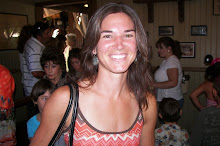I have been working for a holistic nutritional company, on and off now, for seven years. I talk with people from all walks of life with a wide array of ailments. Before beginning any kind of supplemental program, I begin by outlining the basic steps of a holistic approach to healing themselves. There are six steps, taken from an article on The Weston A. Price Foundation website, called Rethinking Reproductive Health by Katie Singer:
Step 1: Do nothing. Take this time to pray, meditate, and rest. It is important to let go of the busy world around you, at this point, and take a little time to get in tune with your self.
Step 2: Collect information. Keep a journal during this period. Talk to friends, read books, and search for answers on your own. Be precise in your record taking. Track moods, feelings (both physical and emotional), and daily activities.
Step 3: Nourish and tonify. Eat well. Eliminate foods that are refined, laden with sugar, loaded with rancid trans fatty acids, and devoid of nutrients. Don't be fooled into labels that claim "All Natural" or that are disguised as health foods. Take some time to prepare your own meals, especially homemade chicken stock, bone broth, and tonics. I recommend everyone include super foods as well. Cod liver oil, coconut oil, acerola, spirulina, etc. These are nutrient-rich foods that have incredible healing properties. Be sure to add exercise in this step. Take a daily walk, join a group class for added support, and incorporate resistance training to your program.
Step 4: Sedate and stimulate. This is the part where supplements begin to enter the program. If your problem is still persisting, try homeopathic remedies first. Other good options are chiropractic medicine, massage, or herbal tinctures. Don't make the mistake of overloading on these, though. Introduce one at a time and slowly. Continue to write down your observations of mood and well-being. Stick with what works for you and get rid of what doesn't.
Step 5: Use supplements. Standardized herbs and good-quality vitamin and mineral supplements should be used first. Then, the use of over-the-counter drugs or even prescription drugs. Be aware, and record, any known side effects. Consider making a list of pros and cons to see whether the supplement would be right for you.
Step 6: Break and enter. Surgery, shots, diagnostic tests, and other conventional approaches can be used as a last resort. I caution to use these only when all other resources have been exhausted. Most people find they don't need to take this last step at all.
In today's society, life revolves around the "quick fix". Many people want to know what they can do today to reverse a lifetime of abuse. Don't make that mistake. Conventional medicine typically consists of putting a band aid on the problem without actually fixing anything. Many times the problem gets worse, leading to increases in dosage, or other problems arise simply from the side effects of the drugs. If you follow the steps of healing, I think you will find out more about yourself than you ever imagined possible and...that nature is much smarter than we are.
(Singer cites these two references for the Six Steps of Healing:)
1. Weed, S. (1985) Wise woman herbal for the childbearing year. Ash Tree Publishing.
2. Weed, S. (2002) The new menopausal years the wise woman way: Alternative approaches for women 30-90. Ash Tree Publishing.
skip to main |
skip to sidebar

Getting back to the basics blog with a holistic approach to parenting, nutrition, exercise, and overall lifestyle.
Featured Blog
Recommended Books:
Labels
- Competition photos (1)
- Environment (1)
- Family stories (7)
- Fitness (2)
- Health (19)
- Motivation (3)
- Nutrition (12)
- Pregnancy and delivery (4)
- Recipes (6)
- Supplements (4)
Inspiration Corner
“Within each of us, nature has provided all the pieces of the puzzle necessary to achieve exceptional health and wellness … then let it up to us to put them all together.”
~ Diane McLaren
~ Diane McLaren
About Me

- Core
- I grew up with seven older brothers and two sisters (yes, it is true). Maybe that is why I was a regular tomboy. I played and excelled in many sports. Later on, I joined the Army. I have competed in long-distance running, fitness competitions, and natural bodybuilding shows. Nothing has been as challenging or as rewarding as becoming a mother. I am grateful for my children and my husband, Deuce, of eight years. I balance family life with a full-time school schedule (CSUSB Kinesiology major), running a fitness club and a cooking/nutrition club with my friends, and working one day a week at a holistic nutrition store.





